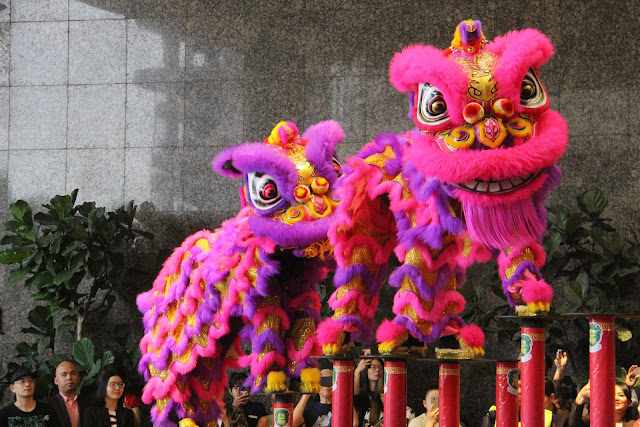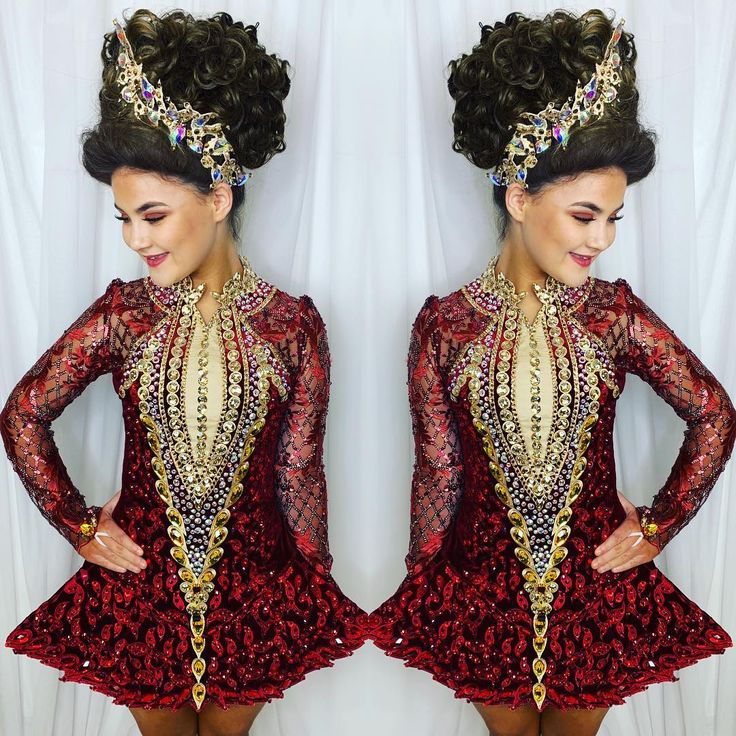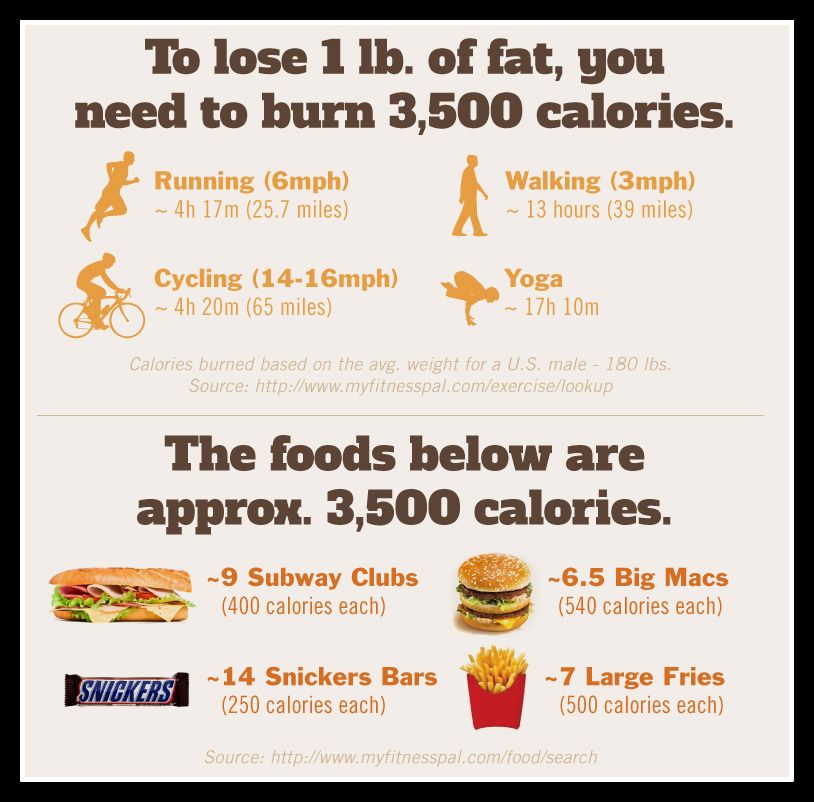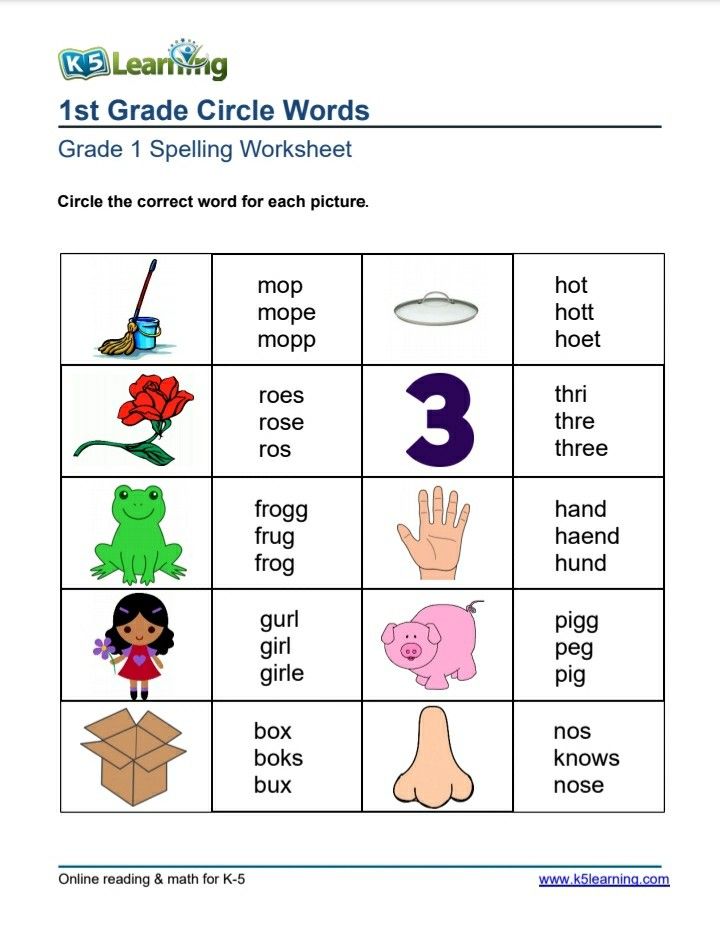How to dance 2 step country
Two Step Dance | Learn the Basics of Country Two Step
Every beginner country dancer needs to learn the basic patterns for country two step. If you want to learn how to country two step, also called progressive two-step, you’re in the right place. Two step is a fun dance that travels around the line of dance with walks and spins to fast country music. First, we need to master the basic steps. Below is a simple syllabus to get you started on the basic two step patterns as a beginner.
TAKE ACTION> Download our Basics of 2-Step Video for FREE
Powered by Convert Plus
TAKE ACTION> Jump to the Two Step Basic Patterns on this page
What is Country Two Step?
Country Two Step also known as Texas Two Step is a fun social dance seen in dance halls and country bars all over north america! It’s a partner dance that follows a counter clockwise pattern around the dance floor with lots of spins and wraps. Although it’s typically done to country music, there is plenty of two stepping done to non country music as well!
What is Texas Two Step?
Is it different from Country Two Step, Triple Two Step or Nightclub Two Step?
Texas Two Step is essentially the same as Country Two Step!
It IS different from Triple Two Step and Nightclub Two Step (don’t worry we will explain below)
This is what the basics of Country Two Step AKA Texas Two Step look like.
Remember dance is like language. You’ll find different accents in language across the country just like you’ll find different versions of two step across the country as well. Rest assured Country Two Step and Texas Two Step is all the same dance with slight regional differences.
However there are ‘two steps’ associated with country dancing that ARE different.
Triple Two Step and Nightclub Two Step (AKA Nightclub) are totally different.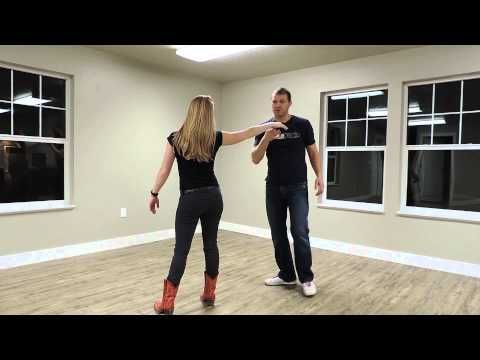
This is NOT Texas Two Step nor Country Two step!
It is it’s own form of two step thought. Confused?
Don’t worry we will make it clear as we go 🙂
What is Nightclub Two Step?This is NOT Texas Two Step nor Country Two Step!
To avoid confusion this dance has changed its name and is just known as Nightclub.
Slightly less confusing 🙂
Country Two Step Basic Patterns
Ok now it’s time to learn the Country Two Step Basic patterns In this beginner two step tutorial you’ll lean all the basic patterns you need to look great on the dance floor, even as a beginner! Lean the basic, the outside turns, the inside turns and the couples turns!
Country Two Step Beginner Patterns
Below is a list of individual patterns that you’ll need to know as a beginner. These are the country two step basics that you’ll need to know to feel comfortable in a honky tonk, dance hall or dance studio anywhere in the world! Sometimes two step is called traveling west coast swing.
Forward Basic in country two step
The man traveling forward and the lady backward in closed or open dance position, walking with a series of four walks to the basic timing of quick, quick, slow, slow. Walks may be dance with either a heel or toe lead. This is a debatable topic among many dance professionals, with camps on both side of the fence (or should I say foot)?! An alternate timing is to count by the numbers: 1, 2, 3, 5 (holding counts 4 and 6, as they are part of the slow beat).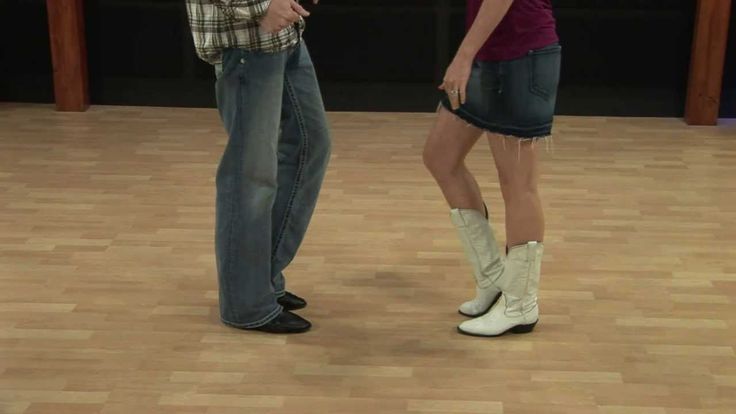
Backward basic and transition from forward to backward for country two step
This is the same as the first pattern, except the man travels backward while the lady walks forward. To transition from the forward basic to the backward basic, there needs to be a few side steps or chasses to smooth the change of direction.
Lady’s Right Turn ending in Promenade for country two step
The man preps the lady for a right, or outside turn, on the second slow. He leads her spin on the quick, quick, and finishes in frame in the promenade position, with both the leader and follower facing the line of dance, ready for the next pattern.
Lady’s Left Turn to Wrap for country two step
The man preps a left or inside turn for the lady on counts slow, slow, by leading a subtle swivel action with his hands and body. The follower turns to the left on the quick, quick, with her arms wrapping up into the cuddle position around her waist.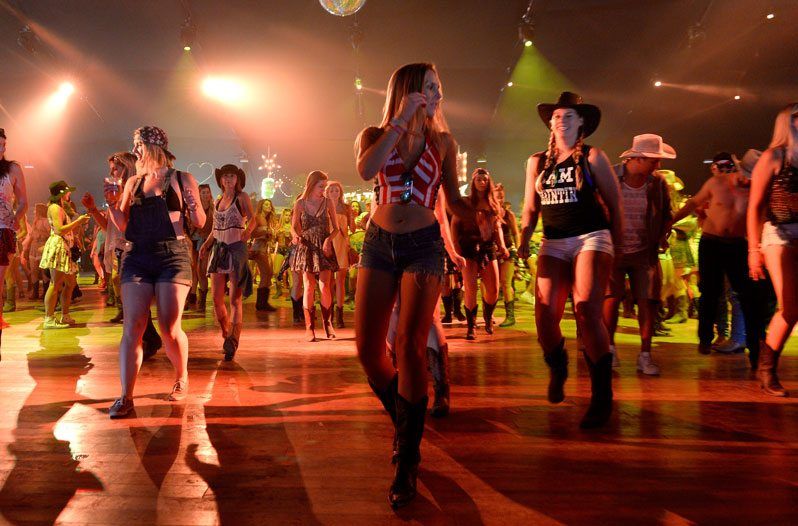
Lady’s Right Turn to Back Line of Dance for country two step
The man follows the same procedure as the previous right turn for the lady, except finishes with both partners backing the line of dance. This is the preparation for one of the most popular basic patterns, often referred to as a weave or lace. The free arm may be stylized straight out to the side for both the leader and the follower.
Chasse to Forward Line and Back Line
A chasse (or side together side) is danced facing your partner, first ending in a cross over break line, and then repeated to end in the original line, backing the line of dance.
Patty cake Vine
This combines elements of the chasse with the popular grapevine, which cross back, side, and front. Lady’s left turn to back line of dance or face partners. An inside turn for the lady is a great way to transition to different positions on the floor and to end the current position. Inside turns are generally easier for the follower to dance well.
Check weave
This pattern is the heart of the dance. Many intermediate and advanced patterns stem from this one beginner pattern. So it is very important to master and understand the connections for this figure. This step involves an inside turn for the lady. This is similar to the check weave except is danced with a lady’s outside turn, instead of an inside turn.
Two Step Dance Moves
There are an endless set of two step dance moves you can learn. First you need to master the basics. Then the followers have to be comfortable with their spins and turns in two step. Once you’re comfortable, it’s time to start learning some new patterns. The best way to learn them is with a membership to our website. It’s like Netflix for Dancers! All the moves are laid out step by step so you never have to worry if the next pattern you’re learning is within your skill set. We’ve taken the guesswork out. Give it a try!
Country Two Step Music
Now that you’re dancing you’ll need some tunes to dance to. We’ve got you covered. On the other side you’ll get our top 10 Two Step Dance tunes as well as over 100 songs that you can practice to. We have lists for country music lovers AND music suggestions for non country music as well. Winner. See our Country Two Step Song List here.
The next big step in learning how to two step dance!
Inside our members area we have 0ver 500 instructional videos to help you learn all styles of country dance. Two Step, East Coast Swing, West Coast Swing, Cha Cha, Nightclub, Waltz and more. You can grab a free membership and get access to 50 videos to help you improve totally FREE. Grab your Free Membership
Country dance lessons - 2 step country western dancing
Learn how to country dance with our videos.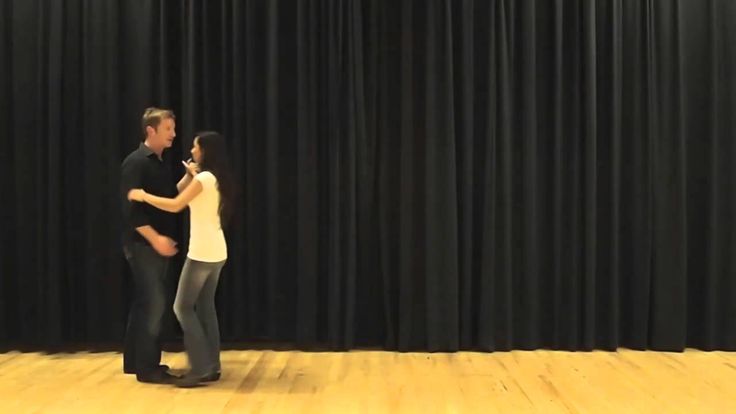 This dance style is done both socially and competitively mostly in the USA! Country Western dancing includes a few different dances such as: country 2 Step, Polka, Waltz and Swing. There are many Line Dances as well. This is a fun style of dance and there is much to learn. Here are some free basic steps you can learn right away.
This dance style is done both socially and competitively mostly in the USA! Country Western dancing includes a few different dances such as: country 2 Step, Polka, Waltz and Swing. There are many Line Dances as well. This is a fun style of dance and there is much to learn. Here are some free basic steps you can learn right away.
Country dance lessons
How to 2 step – Country dance basic step:
This is the most basic step in partner country dance. It is basically just 4 walks forward for the guys and 4 walks back for the ladies. The way to count is Q,Q,S,S.
How to Do Basic Turn in Closed Position – Country dance:
In this second lesson you will build on what you just learned above. This step shows you have you can turn around one another and switch directions. The guys need to lead the ladies strongly so that they can pass through.
How to Do the Cowboy Boogie – Country dance move:
Learn this Country Line Dancing routine. You do this one all on your own! This is great for those of you who don’t always have a partner around. You can teach it to your friends and dance it all together at your favorite bar.
History of Country dancing:
Country dancing was actually born out of foreigners from England, Ireland and Africa. They brought their styles of dance from their home countries to America including Waltz and polka. Later, Polka evolved into the 2-step which is the essential dance of Country dancing. Other styles that are considered Country dancing are Country Waltz, Cowboy cha cha and East/West Coast Swing.
People would dance just about anywhere they could – in bars, dance halls and house parties. In the 1920’s Country music was commercialized and with it Country Western style of dancing. Cowboys loved to dance and would often dance in bars late at night by leading this very social dance. Because of the Cowboy boots this dance involves the technique of using the heel and only later landing to the toe, there is a relaxed, calm upper body with minimal hip action.
In the 1920’s Country music was commercialized and with it Country Western style of dancing. Cowboys loved to dance and would often dance in bars late at night by leading this very social dance. Because of the Cowboy boots this dance involves the technique of using the heel and only later landing to the toe, there is a relaxed, calm upper body with minimal hip action.
Leading and following Tips:
– Both partners must maintain a nice posture and stretch up. From there, you want to connect to one another through the man’s left hand and ladies right hand.
– When the man leads he doesn’t use his arms, but instead his own body weight… By moving his body forward hi gives a very strong single that he wants to move. At the point the the ladies feel the man’s spine moving forward, they need to respond as fast as possible and move.
– The man is responsible to lead the lady’s direction and timing. For example, if the man wants to syncopatesome steps he needs to make that very clear to his partner.
Want to learn other dances? Visit the page below:
https://www.learntodance.com/online-dance-lessons/
Other dance styles:
How to Ballroom dance
Social basic dance steps – Ballroom
Ballet dance terms
how to hip hop dance
How to breakdance
How to dance in a club and parties
Types of dance shoes - Dancejam
There are different types of dance shoes for different styles of dance. The choice of footwear may also depend on the surface on which the dance will be performed. Types of dance shoes: ballroom shoes, step shoes, dance sneakers, half toes or foot protectors, ghillies, ballet flats, pointe shoes, flamenco and jazz shoes.
Ballroom shoes
Ballroom shoes can be divided into women's and men's or classic and Latin American ballroom shoes. Classic ballroom shoes have a low heel that allows the weight to be evenly distributed throughout the foot. Latin American shoes have higher heels that add weight to the toes.
Women's classic ball shoes are pumps with 5cm heels. Men's classic ball shoes - lace-ups with 2.5 cm heels. Sometimes ball shoes are made of fabric that can be dyed to match the color of the dress. The sole of the ballroom shoes is made of suede.
Men's classic ball shoes - lace-ups with 2.5 cm heels. Sometimes ball shoes are made of fabric that can be dyed to match the color of the dress. The sole of the ballroom shoes is made of suede.
Women's Latin ballroom shoes with heels up to 8 cm, with straps and open toe. Men's Latin American ballroom shoes are shaped like heels up to 2 inches.
Tap dance shoes
The boots have metal heels attached to the bottom of the toe and heel. These metal heels make a loud sound when they hit a hard surface during a performance. Tap is known for using the sound of hitting the floor to create a tapping sound. A thin fiber of cardboard called a "deck" is integrated into the sole. The heels are screwed into this deck or glued. The screws can be tightened or loosened to make different sounds. Glue also affects sound quality. The sound quality depends on the material, shape and weight of the heels. They can be concave or convex in shape, some are thinner and lighter and have a small footprint, others are thicker and heavier and fill the edge of the shoe more.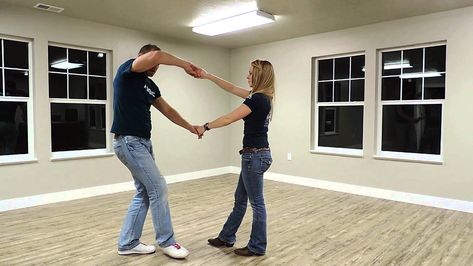
Dance shoes
Dance shoes are lightweight shoes with reinforced rubber on the toes. Thus, the dancer can stand on half toes in a ballet manner.
Foot protection
They cover the foot partly in the metatarsal area to reduce friction. They are flesh-colored and are worn when dancing with bare feet. Half toes protect the skin of the feet from injury and make it easier to turn.
Gillies
Gillies are used in Scottish Highland Dance, Irish Dance and Scottish Country. Gilly is a soft shoe made of leather that follows the shape of the foot and has crossed laces, most often black. Gillies are similar to ballet shoes, with full or two-piece leather soles. They have very long laces to wrap around the ankle, foot and often around the sole.
Scottish highland dancing accompanied by bagpipe music. They develop step dance with their feet, hands and upper body. It is a competitive dance around the world. The Scottish highland gilly is used by women and men. They should be a little more than a foot, due to the thick socks that are worn underneath.
They should be a little more than a foot, due to the thick socks that are worn underneath.
Irish dance is known for its fast foot movements, while the body and arms are still. Irish gillies are used by women. The men wear black leather shoes.
Scottish country dance is a social dance of a group of couples dancing according to a predetermined choreography. Scottish country gillies are used by men.
Ballet shoes
Ballet shoes are soft shoes made of leather, textile, suede or satin with a two-piece leather sole. The outsole is thicker at the heel and metatarsus and thinner at the heel for flexibility. They are secured with an elastic band at the top of the foot.
Pointe shoes
Pointe shoes are used when a ballerina performs a classical dance. These shoes were designed for ballet dancers to feel weightless, light and graceful as they jump. The elements of ballet pointe shoes are a box, two ribbons and an elastic band, shaft, sole, fabric cover and accessories.
Flamenco shoes
Worn by flamenco dancers, they promote percussive footwork. Women's shoes have heels, while men's shoes have short heeled boots. These boots have nails inserted into the heel and toe area to produce sound.
Jazz shoes
Jazz shoes are used in jazz dance and not only. These boots have a chunky heel, a two-piece sole, laces to attach to the foot, and a suede patch for better rotation. Jazz shoes can also be used in other dance genres such as acrobatic rock and roll and acro dance, variety dance and dance show.
Country dance - frwiki.wiki
For the movie, see Country Dance.
Country Dance (literally "Peasant Dance" or "Country Dance") or Country Dance is an English dance in XVII - th centuries, originally square dance.
It has four, six or eight dancers or even more. The dancers are arranged in a circle, in a square or in two columns.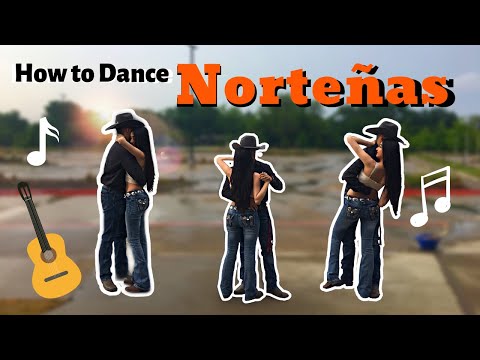 Very quickly this last formation prevails, allowing the progressive development of the dance to an unlimited number of dancers. If these figures are accurate, initially they do not often remain in the dancer's imagination and settle on in XIX - m .
Very quickly this last formation prevails, allowing the progressive development of the dance to an unlimited number of dancers. If these figures are accurate, initially they do not often remain in the dancer's imagination and settle on in XIX - m .
The first edition of Country Dance dates from 1651 when John Playford published the first edition of The English Dance Master .
Not to be confused with square dance derived from square dance in XIX - th century.
Summary
- 1 General
- 1.1 Principle
- 1.2 Levels
- 1.3 Choreographies
- 2 country in France
- 2.1 Balls
- 2.2 Regular pot
- 3 steps
- 4 Derivatives
- 5 Notes and references
General
Principle
Country dances all kinds of country music: waltz, cha-cha-cha, Irish, rock, pop and even tango, etc.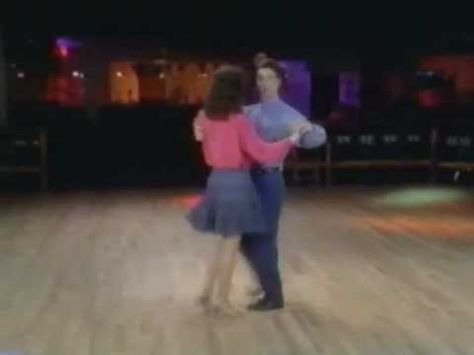 Each music played during a country ball may lead to the performance of one or more choreographies. The same choreography can be performed on several pieces of music. Today it is more than 2000 choreographies. The principle is simple: you need to repeat the choreography on a certain number of walls. The starting wall, called the "12 o'clock wall", is by convention opposite the musicians during the concert, otherwise opposite the audience. The dances mostly consist of two or four walls, but some have only one, while others dance in a circle, in pairs (dance with partners ) or face to face (dance contra ). Some choreographies, such as Lookout , are mostly danced diagonally, i.e. between two walls. Others use diagonals of only a few steps, such as I'm running to you .
Each music played during a country ball may lead to the performance of one or more choreographies. The same choreography can be performed on several pieces of music. Today it is more than 2000 choreographies. The principle is simple: you need to repeat the choreography on a certain number of walls. The starting wall, called the "12 o'clock wall", is by convention opposite the musicians during the concert, otherwise opposite the audience. The dances mostly consist of two or four walls, but some have only one, while others dance in a circle, in pairs (dance with partners ) or face to face (dance contra ). Some choreographies, such as Lookout , are mostly danced diagonally, i.e. between two walls. Others use diagonals of only a few steps, such as I'm running to you .
The choreography consists of 8-beat parts (6 in the case of waltzes). The shorter dances are 16 beats (very rarely less, for example Pick a Bale has 8 beats), the vast majority of dances are 32, 48 or 64 beats, and sometimes much longer. Some like " Where the wind blows" or " Centurion" exceeds 100 beats.
Some like " Where the wind blows" or " Centurion" exceeds 100 beats.
Certain choreographies can contain tags (part of the choreography is added exclusively) or restart (the choreography starts again at the beginning). Some particularly advanced choreographies combine several different tags and several restarts of . The complexity of the dance is often subjective: it depends, of course, on tags , restarts , the length of the choreography, but also from the beginning, style and many of the sensations that music has.
Anyone can create a country dance choreography if it meets certain criteria. There are some favorite dances that we find very often in ballrooms such as Toes , Home to Louisiana , Irish Stew , Easy Come Easy Go . A dance with as many dancers as possible on the floor, which is usually one of the premieres in the National country dance pot, is country .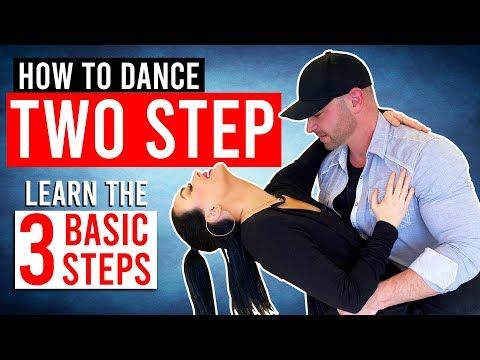
Levels
Country dances include different difficulty levels: beginner, beginner, intermediate and advanced. Dancers may well stay at the same level for several years.
Choreographies
The choreographies below are sorted by level. The level is indicated in the step sheet written by the choreographer.
| Choreography for beginners | Novice Choreography | Intermediate choreographies | Advanced Choreography | Other choreographies |
|---|---|---|---|---|
| Cheyenne | Lay | California blue | Holy Moth | Billy's Dance ( partner ) |
| Easy come, easy go | Lips so close | Soul Counted | Flame floor | Mexican Wind ( partner ) |
| Hooked the country | Not fair | Doctor doctor | Kansas is no more | Seminole Wind (Circle ) |
| Lindy shuffle | South of Santa Fe | Long hot summer | overnight stay | Texas Waltz ( Partner ) |
| Sheriff Tango | White rose | We are tonight | Peaceful Valley | Wanderer ( vs ) |
Country in France
It is thanks to the American Robert Vanstreet (1960-2010) that we are indebted to import country dances to France, thanks to the creation in 1993 in Paris of the first amateur club Les Amis du8 Far West 90. He is also the author of several choreographies including Love Dance and Black Pony . Since then 9The 0055 country dance became popular, attracting large audiences.
He is also the author of several choreographies including Love Dance and Black Pony . Since then 9The 0055 country dance became popular, attracting large audiences.
Balls
Balls are large gatherings of dancers who come to dance, usually on Saturday evenings or Sunday afternoons. There is usually a list of choreographies that will be performed during the ball. The opening dance is often performed in country style . The ball can also trigger an initiation, and time can also be reserved for dances on request, that is, where the dancers present can suggest the choreography they want to dance to.
During the balls you need to know the etiquette of the route . It is a set of rules, more or less unspoken, based mainly on respect and common sense, which allow everyone to dance in good conditions. We can give some basic rules such as:
- Food and drink are strictly prohibited on the dance floor, as is tobacco.
- we do not cross already formed lines, but simply complete them at the end, or create a new line at the back.
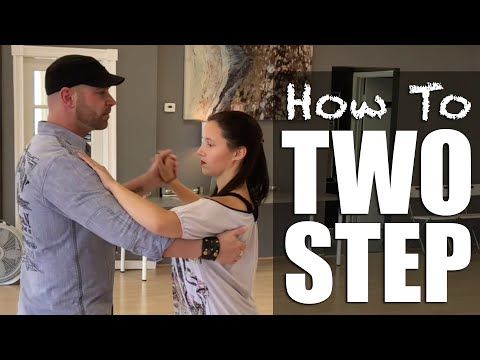
- On the track it is forbidden to carry weapons, even artificial ones, or spurs.
- You must not stay on the dance floor if you are not dancing. In the event of an accident or collision, it is also customary to apologize and replace the glass of the person who was pushed if he knocked it over.
The division of the dance floor must also be taken into account:
- Part 1: the center of the lane is reserved for stationary dances, in a line, without continuous movement along the lane.
- part 2: intermediate part reserved for progressive pair dances or dances with partners, which include, for example, stops and restarts.
- part 3: the edge of the lane is reserved for progressive dances used by dancers in faster dances.
Regular potty
Once or twice a year, animators meet to select dances to be included in the curriculum and balls. The "National Common Pot" is a short guide that allows every dancer to find what is most popular in France. In addition, each region has its own Common Pot.
In addition, each region has its own Common Pot.
Each animator offers several choreographies of different levels and different styles. Then the animators vote for their favorite chorea. The choreographies that receive the most votes are elected.
No
Here are some of the most popular country steps:
- Triple Pitch : Three pitches similar to hammered pitch.
- Kick : Kick with the end of the foot extended.
- Coaster step : 3-step weight change, back: one leg moves back, the other gathers, the retreating leg moves forward. Forward: One leg moves forward, the other gathers, the advanced leg moves back.
- Rock Step : two weight transfers.
- Grapevine : put right foot to the right, cross the left leg behind, put the right foot to the right with body weight (also done to the left, and also 1/4 or 1/2 turn).
- Stomping : Foot pose with weight transfer by tapping the heel.

